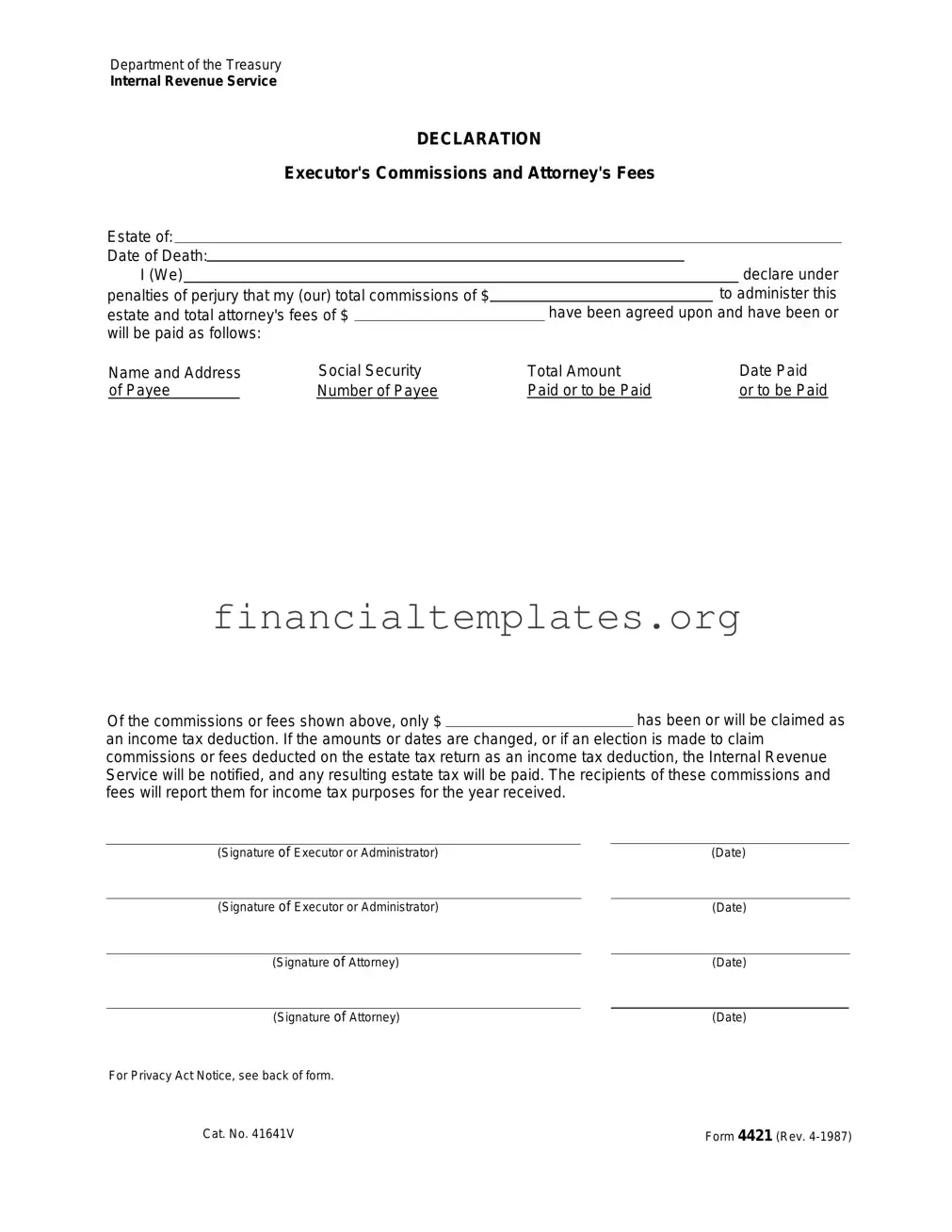The IRS Form 706, United States Estate (and Generation-Skipping Transfer) Tax Return, shares similarities with the IRS Form 4421 as both are integral in the administration of estates. Form 706 is used to report the estate's value and calculate the estate tax due to the federal government, if any, following a person's death. This process is crucial for the proper administration and finalization of an estate, similar to how Form 4421 is used to declare executor's commissions and attorney's fees, which are necessary expenses in managing an estate. Both forms require detailed information about the estate and its administration, ensuring compliance with tax obligations and the efficient processing of the estate.
The IRS Form 1041, U.S. Income Tax Return for Estates and Trusts, is another document related to Form 4421 in that it deals with the financial aspects of an estate or trust following someone's death. Form 1041 is used to report the income, deductions, gains, losses, etc., of estates and trusts. The relation to Form 4421 is evident in the aspect of managing the estate's financial obligations, including paying taxes on income the estate generates. The completion of Form 4421, which includes declarations about commissions and attorney's fees, complements the financial overview provided by Form 1041, ensuring a comprehensive approach to estate management and taxation.
Similar in context to the IRS Form 4421 is the IRS Form 1099-MISC, Miscellaneous Income. This form is employed for reporting payments made during the course of a trade or business to others who are not employees, such as payments to independent contractors. In the realm of estate administration, Form 1099-MISC might be used to report payments for services rendered by attorneys, accountants, and others who the estate might employ, akin to the way Form 4421 reports agreed-upon commissions and fees to executors and attorneys. Both forms deal with the financial transactions associated with managing estates, underscoring the necessity of documenting and reporting these payments for tax purposes.
IRS Form 56, Notice Concerning Fiduciary Relationship, bears relevance to Form 4421 by establishing a person or entity as a fiduciary to the IRS, thus allowing them to act on behalf of another in financial or tax matters. When an executor or administrator is managing an estate, as reported on Form 4421, Form 56 may be filed to notify the IRS of this fiduciary relationship, enabling the fiduciary to make tax-related decisions, including those about executor's commissions and attorney's fees. This interconnection highlights the importance of transparently managing and reporting estate activities to tax authorities.
Lastly, the IRS Form 2848, Power of Attorney and Declaration of Representative, is also related to Form 4421, as it allows an individual to authorize another person, typically an attorney, to represent them before the IRS. This authorization can be crucial in the administration of estates, where executors or administrators—potentially declared through Form 4421—might need legal representation to manage tax matters associated with the estate. Form 2848 facilitates this representation, ensuring that those handling the estate can engage with the IRS effectively, similar to how commissions and attorney’s fees are managed and reported on Form 4421.


 Our legal right to ask for the information and whether the law says you must give it.
Our legal right to ask for the information and whether the law says you must give it. What major purposes we have in asking for it, and how it will be used.
What major purposes we have in asking for it, and how it will be used. What could happen if we do not receive it.
What could happen if we do not receive it. filed with them. Any questions we need to ask
filed with them. Any questions we need to ask you so we can:
you so we can: